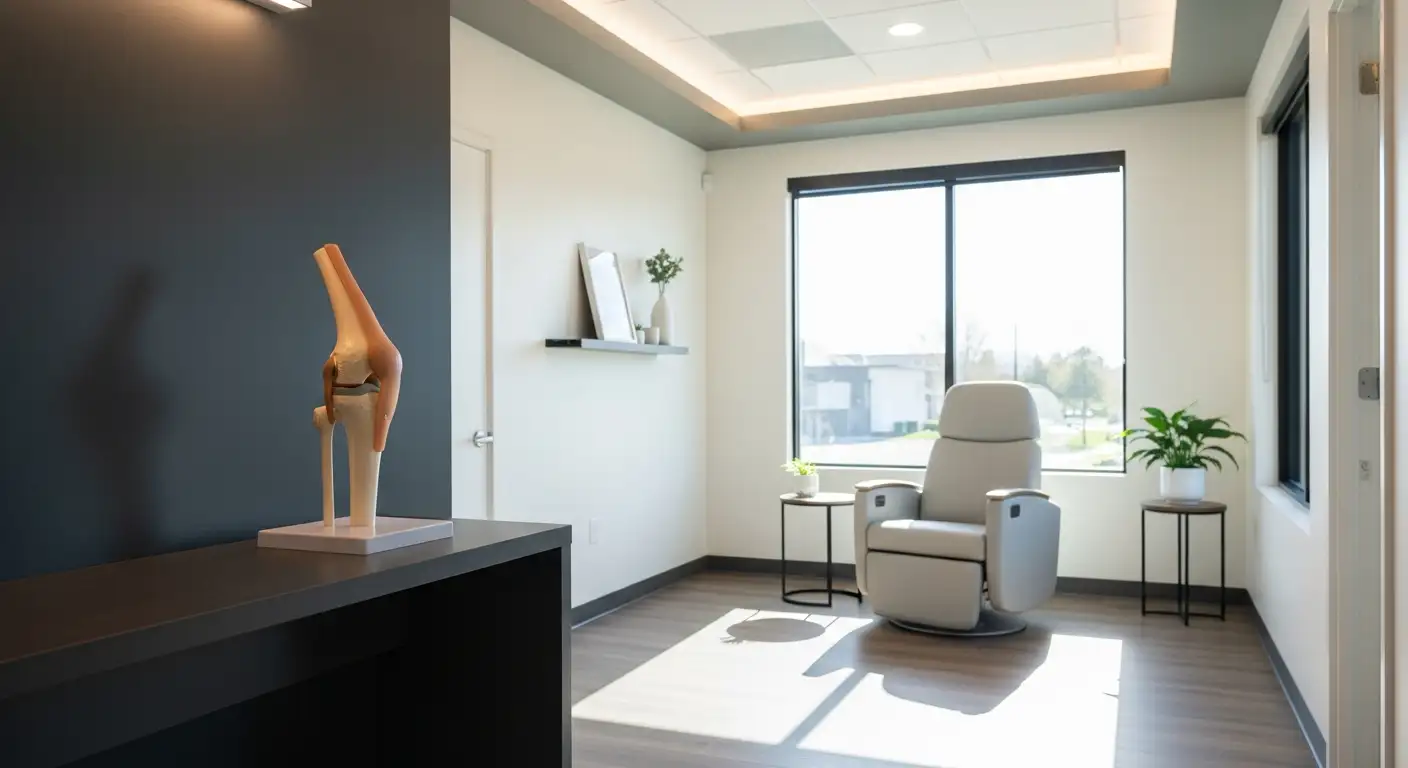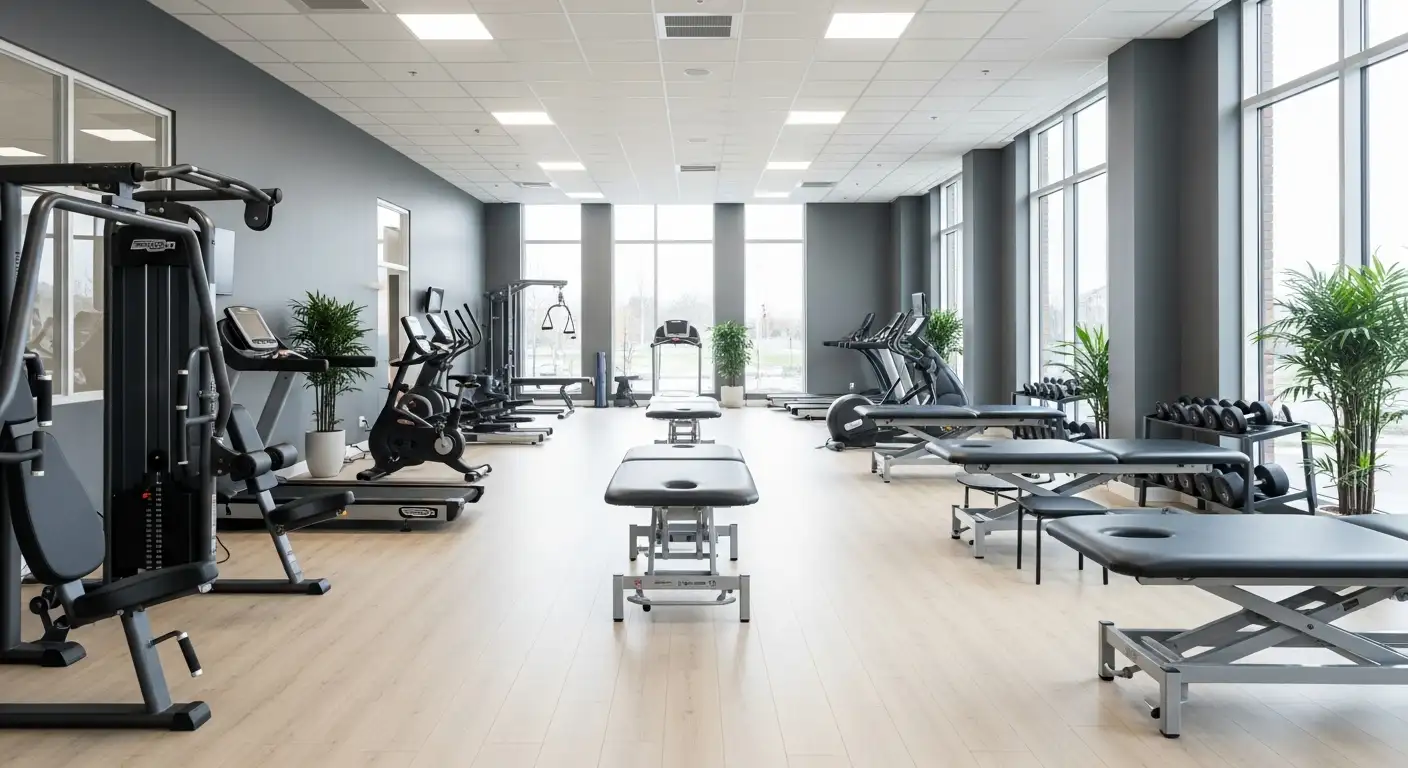Understanding Cold Therapy
Cold therapy, also known as cryotherapy, is a time-tested method used for centuries for its healing and therapeutic benefits. From treating wounds like sprains to reducing swelling in post-operation treatment sites, cold therapy has proven its effectiveness in a wide array of applications. In recent times, it has been recognized as one of the best treatments for combating knee pain, especially after knee surgery. This is where the use of a knee surgery recovery ice machine comes into play.

Benefits of Cold Therapy
The effectiveness of cold therapy is supported by medical professionals and sports rehabilitation specialists. It helps reduce blood flow, nerve activity, swelling, inflammation, and chronic pain. As a result, cold therapy is a recommended method for pain management, especially after knee surgery [2].
One of the main benefits of cold therapy after knee surgery is its ability to numb areas, reduce inflammation, and alleviate pain without the need for medications. This makes it an appealing option for individuals seeking natural, drug-free pain relief solutions. Moreover, the use of a knee surgery recovery ice machine can enhance the effects of cold therapy, providing a more targeted and prolonged application of cold to the affected areas.
Mechanism of Cold Therapy
The basic mechanism of cold therapy involves the application of cold temperatures to the body's tissues, which leads to a series of physiological responses. The cold temperatures constrict blood vessels, reducing blood flow to the area. This subsequently reduces swelling and inflammation, providing relief from discomfort.
In addition, cold therapy also numbs nerve endings, providing pain relief and enhancing patient comfort. This is particularly beneficial after knee surgery, due to the unique anatomical and physiological characteristics of the knee joint.
In conclusion, understanding the benefits and mechanism of cold therapy is the first step towards leveraging its healing power for knee surgery recovery. A knee surgery recovery ice machine can act as a valuable tool in this process, enhancing the effects of cold therapy and providing targeted relief to the knee area.
Ice Machines vs. Traditional Ice Packs
In the realm of cold therapy for post-surgical recovery, a common debate emerges between the use of traditional ice packs and the more advanced knee surgery recovery ice machines.
Effectiveness of Ice Machines
Cold therapy machines, or ice machines, are devices designed to apply cold to a specific part of the body, using a combination of ice, tubing, and a brace or wrap that's fitted to the desired body part [4]. They are most commonly used to reduce inflammation and help speed up the healing process after surgery or an injury.
These machines offer a more targeted and effective approach to cold therapy. They use a pump and specialized tubing to ensure that the cold water is circulated through the unit at a constant rate, leading to rapid, healthy healing. The best cold therapy units are designed with safety in mind, carefully regulating temperature and circulating cold water evenly to ensure the skin never becomes too cold, which could potentially lead to further injury.
Ice machines for knee surgery, total knee replacement surgery, and partial knee replacement surgery have become an integral part of the post-operative recovery process. They provide targeted cold therapy that aids in healing and rehabilitation of patients.
Comparison with Ice Packs
While traditional ice packs have their place in cold therapy, they often fall short when compared to the benefits offered by ice machines.
Ice machines provide a non-pharmacological method of pain relief by numbing the nerve endings in the treated area, leading to a decreased reliance on pain medications and minimizing potential side effects. They effectively reduce blood flow to the surgical area, preventing excessive accumulation of fluids and reducing tissue swelling, thus contributing to a faster and smoother recovery process.
On the other hand, traditional ice packs can be difficult to apply and maintain in place, particularly around joints like the knee. Additionally, they may not provide a consistent level of cold therapy, as they warm up over time and require frequent replacements.
Cold therapy machines, on the other hand, are a lot easier and more effective than applying an ice pack, while operating on the same scientific principles.
In summary, while both ice machines and traditional ice packs can provide cold therapy, the former offers a more consistent, targeted, and effective treatment, particularly beneficial in the context of knee surgery recovery.
How Ice Machines Work
Understanding how a knee surgery recovery ice machine operates can help individuals optimize their healing process. These machines, which are designed to apply cold to a specific part of the body, work on principles of cold therapy, also known as cryotherapy, and are used to reduce inflammation and speed up the healing process after surgery or an injury [4].
Circulation of Cold Water
The primary mechanism of an ice machine involves the circulation of cold water. A pump and specialized tubing ensure that the cold water is circulated through the unit at a constant rate. This consistent and targeted application of cold therapy is what makes these machines particularly effective, leading to rapid, healthy healing.
Cold therapy works by constricting blood vessels, reducing blood flow, which subsequently reduces swelling and inflammation. It also numbs nerve endings, providing pain relief and enhancing patient comfort.
Temperature Control and Settings
Safety is a key feature of the best cold therapy units. They are designed to carefully regulate temperature and circulate cold water evenly to ensure the skin never becomes too cold, as this could potentially lead to further injury [4].
The temperature control allows users to adjust the cold intensity according to their comfort level or as recommended by their healthcare provider. This feature, coupled with the consistent circulation of cold water, effectively reduces blood flow to the surgical area, preventing excessive accumulation of fluids and reducing tissue swelling, thus contributing to a faster and smoother recovery process.
These machines are designed to operate quietly, creating a relaxing environment for recovery. By understanding how a knee surgery recovery ice machine works, users can better utilize this tool for optimal post-operative rehabilitation.
Best Practices for Using Ice Machines
When using a knee surgery recovery ice machine, it's crucial to follow best practices to ensure optimal recovery and prevent potential health risks. This involves understanding the appropriate frequency and duration of use and avoiding over-icing.
Frequency and Duration of Use
For the best results, it is recommended to ice the surgical area at least four times daily for 15-20 minutes for each cold therapy session during the first 48 hours post-surgery. Cold therapy units should be used as much as possible during the first few days following knee surgery to help reduce inflammation and swelling around the surgical incision. If swelling persists longer than a few days, it is acceptable to continue using the cold therapy until the swelling resolves [5].
However, to determine the precise duration and frequency of cold therapy sessions following surgery, one should always consult their doctor for personalized recommendations. The doctor's advice is crucial based on the individual's unique injury or rehabilitation needs, ensuring optimal recovery and preventing potential health risks.
Avoiding Over-Icing
While an ice machine can be a powerful tool for knee surgery recovery, over-icing can potentially lead to severe repercussions such as tissue damage and reactive vasodilation, which widens blood vessels. This can hinder the body's healing process by restricting blood flow needed for immune cells to access the injured area and promote healing.
To avoid over-icing, the cold therapy unit should not be used for more than two hours at a time without turning it off for thirty minutes. This practice ensures that the body gets a break from the cold treatment and the skin is not exposed to prolonged periods of extremely low temperatures. Patients are encouraged to adhere to these specified time frames for optimal recovery benefits.
Following these best practices when using a knee surgery recovery ice machine can help to manage pain, reduce inflammation, and enhance overall comfort, setting the stage for a swift and successful recovery.
Recovery Benefits of Ice Machines
Using a knee surgery recovery ice machine can offer numerous benefits, significantly aiding in the healing process post-surgery. The primary advantages of using these machines include reduction of swelling and inflammation, and pain relief and comfort enhancement.
Reduction of Swelling and Inflammation
One of the main recovery benefits of ice machines is their ability to efficiently reduce swelling and inflammation. These machines work by effectively reducing blood flow to the surgical area, preventing excessive accumulation of fluids and reducing tissue swelling. This is achieved by inducing vasoconstriction, which narrows blood vessels, and slowing down metabolic activity, which in turn reduces the release of inflammatory chemicals and prevents edema formation.
This efficient control of swelling and inflammation contributes to a faster and smoother recovery process, making ice machines a recommended choice for managing recovery after knee surgery.
Pain Relief and Comfort Enhancement
In addition to controlling swelling and inflammation, ice machines also play a crucial role in pain relief and enhancing patient comfort. These machines provide a non-pharmacological method of pain relief by numbing the nerve endings in the treated area. This leads to a decreased reliance on pain medications, minimizing potential side effects [3].
Cold therapy triggers the release of endorphins, the body's natural pain-relieving chemicals, which bind to opioid receptors in the brain and spinal cord, providing pain relief. Cold therapy also reduces the activity of nociceptors, specialized nerve endings responsible for transmitting pain signals, leading to decreased pain perception. The effectiveness of cold therapy in managing pain is supported by medical professionals and sports rehabilitation specialists.
Through these mechanisms, a knee surgery recovery ice machine can significantly enhance comfort during the recovery period, making it a valuable addition to post-surgical care. When used correctly and consistently, these machines can greatly contribute to an efficient and comfortable recovery journey.
Choosing the Right Ice Machine
Selecting an appropriate knee surgery recovery ice machine can significantly impact the effectiveness of your recovery process. Several factors should be considered to ensure you're investing in a machine that best suits your needs.
Factors to Consider
When deciding on a cold therapy machine, it's crucial to keep in mind the following factors:
- Effectiveness: The machine should be able to maintain a consistent cold temperature and circulate the cold water evenly to ensure effective therapy.
- Safety: It's important to choose a machine that carefully regulates the temperature to prevent the skin from becoming excessively cold, which could lead to further injury.
- Noise Level: Ideally, the machine should operate quietly to create a relaxing environment conducive to recovery.
- Ease of Use: The machine should be user-friendly, with intuitive controls and easy-to-follow instructions.
- Design and Comfort: The machine should be ergonomically designed and come with a comfortable wrap or brace to ensure a good fit on the knee.
Top Ice Therapy Machines
According to Ortho Bracing, the following are some of the best ice therapy machines for knee pain relief in 2023:
Each of these machines offers unique features, such as compression, insulation, portability, and targeted cold therapy, that can help alleviate knee pain and swelling after surgery. By considering the factors mentioned above, you can choose a knee surgery recovery ice machine that best suits your recovery needs.
References
[1]: https://orthobracing.com/blogs/resources/how-long-to-use-cold-therapy-after-surgery
[2]: https://orthobracing.com/blogs/resources/ice-machine-for-knee
[3]: https://www.succeedcourses.com/blog/ice-machine-for-knee-surgery
[4]: https://orthobracing.com/blogs/resources/best-cold-therapy-machine
[5]: https://www.jamiefriedmanmd.com/cold-therapy-machine-instructions-orthopaedic-sports-medicine-surgeon-colorado-springs-co.html





